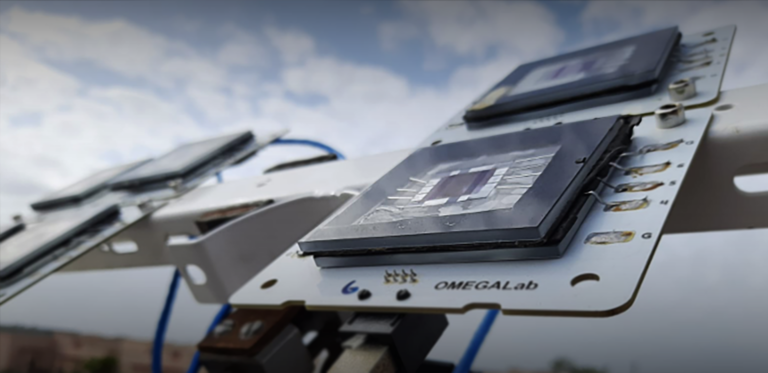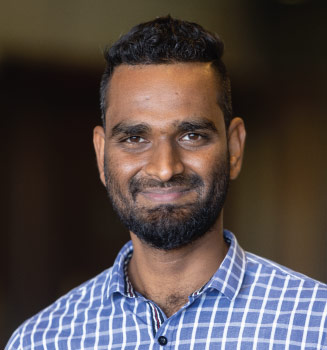Material Science and Engineering
Beam me up to 5G, Schottky
A novel device architecture makes organic electronics applicable to 5G telecommunications.

KAUST researchers show that organic semiconductors are capable of operating in the 5G frequency range, just like industry standard inorganic semiconductors. © 2022 KAUST. /en/article/1222/beam-me-up-to-5g,-schottky
KAUST researchers show that organic semiconductors are capable of operating in the 5G frequency range, just like industry standard inorganic semiconductors. © 2022 KAUST. /en/article/1222/beam-me-up-to-5g,-schottky
A crucial component for radio-frequency circuits using an organic material with potential for 5G applications has been developed by an international team of scientists led by KAUST.
Organic semiconductors have many of the same physical properties as their inorganic counterparts, such as silicon-based semiconductors. However, organic semiconductors are made using solvent-based processing techniques, making them cheaper and more flexible. A significant drawback is that electrical charges move much slower in organic materials. This drawback is a barrier to applying organic semiconductors for use in fast applications such as radio-frequency electronics.
“Unlike their inorganic counterparts, organic semiconductors are cheap and easy to process via solution-based routes like printing or blade and die coating,” explains Ph.D. student Kalaivanan Loganathan, working with Thomas Anthopoulos. “To make this technology useful for the 5G frequency band, there is a need to fabricate organic Schottky diodes.”

Kalaivanan (left) and Professor Thomas Anthopoulos hope to integrate their diodes into radio-frequency circuits, ID tags and wireless energy harvesting devices.
© 2022 KAUST.
The Schottky diode, like all electronic diodes, allows current to pass through in one direction but blocks flow in the other. The most important difference between the more ubiquitous p–n diode and the Schottky diode is that the latter can switch from the conducting to the nonconducting state much faster. This makes them essential in radio-frequency applications.
The speed of Schottky diodes is generally limited by the device capacitance and the resistance. But organic semiconductors are often associated with high capacitance and resistance due to their low charge carrier mobility. They are mostly employed in conventional sandwich-type architecture in which the semiconductors, metals and electrical contacts are laid one on top of the other.
Loganathan and the team reimagined this device architecture and placed the two electrical connections side-by-side. The organic semiconductor, referred to as C16IDT-BT, was placed in a tiny gap of just 25 nanometers in between the diodes. This structure gave the diodes an ultralow capacitance and resistance. They showed that this Schottky diode operated up to a frequency of 6 gigahertz (6 billion cycles per second). They were then able to extend this to 14 gigahertz by chemically doping the semiconductor with the addition of another molecule.
“Our results show that organic semiconductors are capable of operating in the 5G frequency range, like their inorganic counterpart,” says Loganathan. “With the added advantage that they can be mass manufactured at low cost using solution processing.” The team hopes to integrate their diodes into radio-frequency circuits, ID tags and wireless energy harvesting devices.
References
- Loganathan, K., Scaccabarozzi, A.D., Faber, H., Ferrari, F., Bizak, Z., Yengel, E., Naphade, D.R., Gedda, M., He, Q., Solomeshch, O., Adilbekova, B., Yarali, E., Tsetseris, L., Salama, K.N., Heeney, M., Tessler, N. & Anthopoulos, T.D. Switching for multi-bit per cell magnetic memory with perpendicular anisotropy. 14 GHz Schottky diodes using a p-doped organic polymer. Advanced Materials 34, 2108524 (2022).| article
You might also like

Material Science and Engineering
Electron movie guides design of layered perovskite materials

Material Science and Engineering
Remote region sensor for essential vitamin deficiency

Material Science and Engineering
Low-power hydrogen sensor detects leaks in an instant

Material Science and Engineering
Illuminating pathways to long-lived organic solar cells

Chemistry
Beating the dark current for safer X-ray imaging

Chemical Engineering
Net benefits for advanced materials design

Material Science and Engineering
Atom-thin insulator grown into perfect films

Material Science and Engineering




